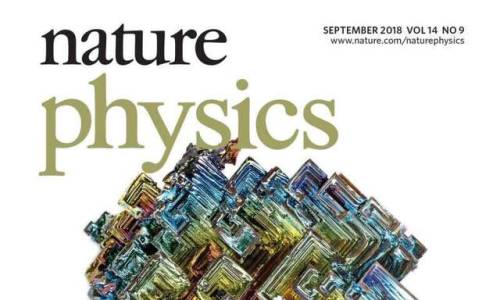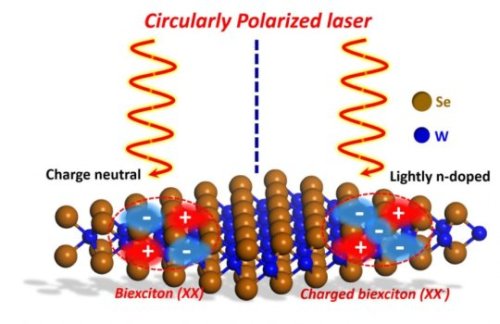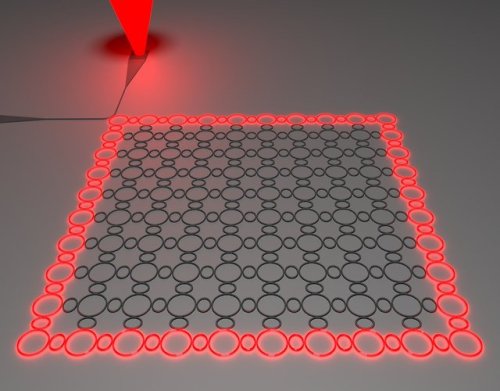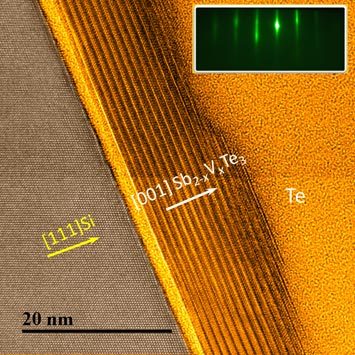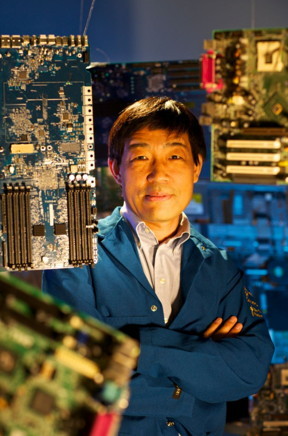#topological insulators
Bismuth shows novel conducting properties
A team of international scientists including Maia G. Vergniory, Ikerbasque researcher at DIPC and UPV/EHU associate, has discovered a new class of materials, higher-order topological insulators. Theoretical physicists first predicted the existence of these insulators, which have conducting properties on the edges of crystals rather than on their surfaces, and conduct electricity without dissipation. Now, these novel properties are demonstrated experimentally in bismuth.
The current flows without resistance and responds in unconventional ways to electric and magnetic fields. These unique properties have future applications in high-performance electronics and quantum computation.
Higher-order topological insulators
Recently, a new class of topological materials with novel conducting properties was predicted by a group of physicists from Donostia International Physics Center (DIPC), the University of the Basque Country (UPV/EHU), UZH, Princeton University and Max Planck Institute of Microstructure Physics. The researchers refer to it as a “higher-order topological insulator.”
Post link
How light pulses can create channels that conduct electricity with no resistance in atomically thin semiconductors
Theoretical physicists at the Department of Energy’s SLAC National Accelerator Laboratory used computer simulations to show how special light pulses could create robust channels where electricity flows without resistance in an atomically thin semiconductor.
If this approach is confirmed by experiments, it could open the door to a new way of creating and controlling this desirable property in a wider range of materials than is possible today.
The result was published in Nature Communications.
Over the past decade, understanding how to create this exotic type of material – known as “topologically protected” because its surface states are impervious to minor distortions – has been a hot research topic in materials science. The best-known examples are topological insulators, which conduct electricity with no resistance in confined channels along their edges or surfaces, but not through their interiors.
Post link
Research on light-matter interaction could improve electronic and optoelectronic devices
Fundamental research sheds light on new many-particle quantum physics in atomically thin semiconductors
A paper published in Nature Communications by Sufei Shi, assistant professor of chemical and biological engineering at Rensselaer, increases our understanding of how light interacts with atomically thin semiconductors and creates unique excitonic complex particles, multiple electrons, and holes strongly bound together. These particles possess a new quantum degree of freedom, called “valley spin.” The “valley spin” is similar to the spin of electrons, which has been extensively used in information storage such as hard drives and is also a promising candidate for quantum computing.
The paper, titled “Revealing the biexciton and trion-exciton complexes in BN encapsulated WSe2,” was published in the Sept. 13, 2018, edition of Nature Communications. Results of this research could lead to novel applications in electronic and optoelectronic devices, such as solar energy harvesting, new types of lasers, and quantum sensing.
Shi’s research focuses on low dimensional quantum materials and their quantum effects, with a particular interest in materials with strong light-matter interactions. These materials include graphene, transitional metal dichacogenides (TMDs), such as tungsten diselenide (WSe2), and topological insulators.
Post link
Applying topological physics to lasing creates more highly efficient and robust lasers
Israeli and US researchers have developed a new, highly efficient coherent and robust semiconductor laser system: the topological insulator laser.
The findings are presented in two new joint research papers, one describing theory and the other experiments, published online today by the prestigious journal Science.
Topological insulators are one of the most innovative and promising areas of physics in recent years, providing new insight into the basic understanding of protected transport. These are special materials that are insulators in their interior but conduct a “super-current” on their surface: the current on their surface is not affected by defects, sharp corners or disorder; it continues unidirectionally without being scattered.
The studies were conducted by Professor Mordechai Segev, of The Technion–Israel Institute of Technology, and his team: Dr. Miguel A. Bandres and Gal Harari, in collaboration with Professors Demetrios N. Christodoulides and Mercedeh Khajavikhan and their students Steffen Wittek, Midya Parto and Jinhan Ren at CREOL, College of Optics and Photonics, University of Central Florida, together with scientists from the US and Singapore.
Post link
Long-Sought Magnetic Mechanism Observed in Exotic Hybrid Materials
The elusive quantum phenomenon—called van Vleck magnetism—may allow scientists to manipulate topological insulators and engineer new electronics.
Post link
Research accelerates quest for quicker, longer-lasting electronics: UC Riverside-led research makes topological insulators magnetic well above room temperatures
In a paper published today in “Science Advances,” Jing Shi, a professor of physics and astronomy at the University of California, Riverside, and colleagues at Massachusetts Institute of Technology (MIT), and Arizona State University report they have created a TI film just 25 atoms thick that adheres to an insulating magnetic film, creating a “heterostructure.” This heterostructure makes TI surfaces magnetic at room temperatures and higher, to above 400 Kelvin or more than 720 degrees Fahrenheit.
The surfaces of TI are only a few atoms thick and need little power to conduct electricity. If TI surfaces are made magnetic, current only flows along the edges of the devices, requiring even less energy. Thanks to this so-called quantum anomalous Hall effect, or QAHE, a TI device could be tiny and its batteries long lasting, Shi said.
Engineers love QAHE because it makes devices very robust, that is, hearty enough to stand up against defects or errors, so that a faulty application, for instance, doesn’t crash an entire operating system.
Post link

